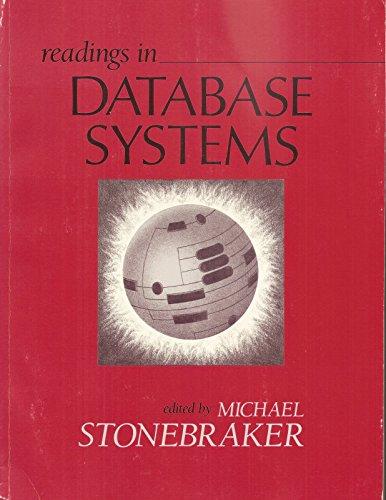Question
FOR PYTHON Please note you will write the code for this assignment in 2 parts. I Part 1 is Buy or Hold Part 2 is
FOR PYTHON
Please note you will write the code for this assignment in 2 parts. I
Part 1 is Buy or Hold
Part 2 is Buy, Sell or Hold
Please note you will write the code for this assignment in 2 parts. In vocareum use the dropdown menu on top to switch between parts.
Part 1 is Buy or Hold
Part 2 is Buy, Sell or Hold
Many investment management companies are switching from manual stock trading done by humans to automatic stock trading by computers. You've been tasked to write a simple automatic stock trader function that determines whether to buy, sell, or do nothing (hold) for a particular account. It should follow the old saying "Buy low, sell high!"
This function takes 4 input parameters in this order:
- current_shares - current number of shares of this stock in the account (int).
- purchase_price - price (per share) paid for current stock in the account (float).
- market_price - current market price (per share) of stock in the account (float).
- available_funds - maximum amount the client is willing to spend on a stock purchase (float).
Any transaction (buy or sell) costs $10. This $10 must be paid out of the available_funds for a purchase, or out of the proceeds of a stock sale. Be sure to account for this fee in your profit calculations.
A purchase would be considered profitable when the current market price is lower than the purchase price, and the available funds will allow us to buy enough shares so that the difference in value will cover the $10 transaction fee. In this case the function should return the string "Buy # shares" where # is an integer representing the number of shares to purchase.
A sale would be considered profitable when the current market price is higher than the purchase price, and the value gained by selling the shares will cover the $10 transaction fee. In this case the function should return the string "Sell # shares" where # is an integer representing the number of shares to sell.
If neither a buy nor a sell would be profitable, then the function should return the string "Hold shares."
Here are some test cases that your function should satisfy:
| Test 1 | Test 2 | Test 3 | Test 4 | Test 5 | Test 6 | |
| current_shares | 10 | 20 | 15 | 1 | 10 | 1 |
| purchase_price | 100 | 2 | 12 | 1 | 1 | 1 |
| market_price | 1 | 1 | 1 | 11 | 3 | 12 |
| available_funds | 10 | 21 | 12 | 0 | 30 | 0 |
| OUTPUT | Hold shares | Buy 11 shares | Buy 2 shares | HoldShares | Sell 10 shares | Sell 1 shares |
Rationale for test cases:
Test 1 Even though the current market price is very low (compared to the purchase price), after paying the $10 transaction fee, we would not have any funds left to buy shares; so we can only hold.
Test 2 After paying the $10 transaction fee, there are enough funds remaining to buy 11 shares. At a purchase_price vs. market_price difference of $1 per share, our 11 shares represent a value gain of $11 dollars, which is $1 more than the $10 transaction fee - so we come out $1 ahead.
Test 3 After paying the $10 transaction fee, there are enough funds remaining to buy 2 shares. At a purchase_price vs. market_price difference of $11 per share, our 2 shares represent a value gain of $22 dollars, which is $12 more than the $10 transaction fee - so we come out $12 ahead.
Test 4 Selling our 1 share for $11 will leave us with just $1 after we pay the $10 transaction fee. That is the same as what we paid for it, and we won't make any profit - so we should hold.
Test 5 With a market_price vs. purchase_price vs. difference of $2 per share, we stand to make $20 from the sale of our 10 shares. This is $10 more than the price of the transaction fee, so we will come out $10 ahead - therefore we should sell all 10 shares.
Test 6 Our 1 share is worth $11 more than we paid for it at the current market price. The $11 dollars obtained by selling that share now will still leave us with a profit of $1 after paying the $10 transaction fee. Profit is profit, so we should sell.
Step by Step Solution
There are 3 Steps involved in it
Step: 1

Get Instant Access to Expert-Tailored Solutions
See step-by-step solutions with expert insights and AI powered tools for academic success
Step: 2

Step: 3

Ace Your Homework with AI
Get the answers you need in no time with our AI-driven, step-by-step assistance
Get Started


